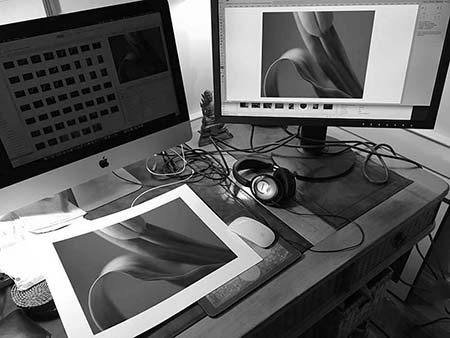[QUOTE=Ken Lee;1579542]If we find ourselves disoriented in the woods, we can run around in many directions and eventually go in circles. Or, we can simply climb to the top of the
I totally agree with Ken, the essential skill that you need is use of image editing software, and Photoshop would definitely be my choice.
In terms of making negatives and printing in silver you already have a huge advantage over most people who get involved with some form of hand crafted printing in that you know what a good negative looks like, and you understand how to expose and develop paper.
And I do suggest the use of QTR for your digital negatives. And I highly recommend a new book that was just published on digital negatives with QTR.
https://www.amazon.com/Digital-Negat.../dp/0367862301
Sandy



 Reply With Quote
Reply With Quote


Bookmarks